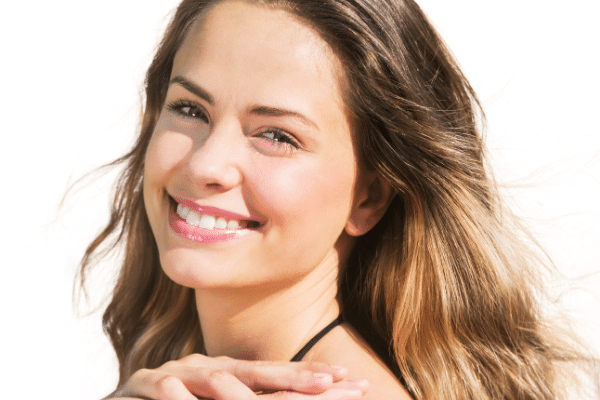
Protect Yourself from UV Radiation
While enjoying sunny days, most people know to take precautions from the sun’s harmful ultraviolet (UV) radiation–however, what is lesser known is that skin cancer is the most common cancer in the U.S. As a helpful reminder, here are key understandings along with important precautions to help protect you against harmful UV rays.
The sun’s ultraviolet radiation can damage your skin in as little as 15-minutes, destructively harming the genetic material in your skin cells, your DNA. This can result in the development of abnormal cells and uncontrolled growth, or skin cancer – which too, can invade or spread to other parts of the body.
Types of skin cancer include basal cell carcinoma, squamous cell carcinoma and melanoma, the deadliest and most common type of skin cancer. And too, along with skin cancer, exposure to the sun’s UV radiation can cause additional health effects – including:
- Premature aging: wrinkles, dry scaly patches, age spots, blotchy complexion. In fact, 90% of visible skin changes commonly attributed to aging skin are caused by the sun.
- Eye damage: cataracts, pterygium, macular degeneration, and eye cancer
Protective Measures:
- Apply a broad-spectrum, water-resistant sunscreen with a sun protection factor (SPF) of at least 30 to all skin not covered by clothing.
- Generally, between 10 a.m. – 4 p.m. are the strongest rays. If possible, schedule outdoor activities outside of these times.
- Clothing absorbs or blocks much of the sun’s radiation and helps to provide long-lasting protection. The more skin you can reasonably cover, the better (and a tighter fabric weave offers the best protection). Too, dry clothing offers more sun protection than wet clothing.
- Hats, especially wide-brim ones, help block damage to your ears, nose, and neck. Baseball caps offer little protection.
- Sunglasses with UV protection help protect your eyes–lenses that appear dark don’t necessarily offer UV protection. Look for lenses that block 100% of UV rays. Large-framed or wraparound sunglasses offer more sun protection than aviator styles.
- Shoes, covering your feet. If wearing sandals, flip-flops or going barefoot, apply sunscreen to all exposed skin.
- Seek out shade whenever possible but be aware that ultraviolet rays can reflect off dry sand or concrete.
Sunblock: Select a “broad spectrum” product to protect your skin from both UVA and UVB light with a sun protection factor (SPF) of at least 30. This number describes the sunscreen’s effectiveness against UVB rays that are responsible for skin burns (a rating system for UVA light, which is responsible for skin aging, does not currently exist).
Experts recommend applying 1-2 ounces to the entire body. Don’t be stingy –if the layer of sunblock is too thin, it cannot protect you.
There are 2 types of sunscreens: organic (“chemical”) and inorganic (“physical”). Both are safe, protecting you from sun damage, just in different ways:
- Chemical absorbers (oxybenzone, avobenzone, homosalate, oxtinoxate) absorb UV rays so that your skin doesn’t absorb them. Apply 30 minutes before going outside.
- Physical blockers (titanium dioxide, zinc oxide) create a physical barrier between your skin and the UV rays – working immediately.
Re-apply! The protective effects fade with time or get washed away in the water or with sweating. If it’s not there, it cannot protect you. Remember 10 am to 4 pm, ultraviolet rays are the strongest, even when it is cloudy. You may need to reapply every hour!
Lower SPF’s are not recommended (even if you do not burn) because protection from sunburn is not the only reason for wearing sunscreen. You want to reduce damage from the sun. Sunburn can be an immediate reaction, but damage from the sun occurs over a lifetime.
If you have sensitive skin or are taking a medication, consult with your doctor or local pharmacist about your sun protection.
Children: Babies under 6-months should never be exposed to direct sunlight. Use a stroller with a hood or canopy and cover their skin, including arms and legs, with protective clothing. Pediatricians do not recommend using sunscreen or sunblock on babies. For children over age 6 months, taking sun protective measures can prevent skin cancers from developing later in life.
Skin Check: Melanomas often resemble moles, and some even develop from moles. It’s important to constantly monitor your body and be aware of any changes.
If you have a mole that seems abnormal or is changing, have it looked at by a physician. Melanoma recognized and treated early is almost always curable. If not detected early, it can spread and be fatal.
While the sun poses serious health dangers with its harmful rays – taking these steps will ensure you safely enjoy the special lift in spirit, Vitamin D and physical outdoor activities your sunny days offer!!
Dr. Nina Radcliff is dedicated to her profession, her patients and her community, at large. She is passionate about sharing truths for healthy, balanced living as well as wise preventive health measures.
She completed medical school and residency training at UCLA and has served on the medical faculty at The University of Pennsylvania. She is a Board Certified Anesthesiologist. Author of more than 200 textbook chapters, research articles, medical opinions and reviews; she is often called upon by media to speak on medical, fitness, nutrition, and healthy lifestyle topics impacting our lives, today.
Dr. Nina Radcliff is dedicated to her profession, her patients and her community, at large. She is passionate about sharing truths for healthy, balanced living as well as wise preventive health measures.
She completed medical school and residency training at UCLA and has served on the medical faculty at The University of Pennsylvania. She is a Board Certified Anesthesiologist. Author of more than 200 textbook chapters, research articles, medical opinions and reviews; she is often called upon by media to speak on medical, fitness, nutrition, and healthy lifestyle topics impacting our lives, today.


































1 thought on “Important Steps to Help Prevent Skin Cancer”
Comments are closed.